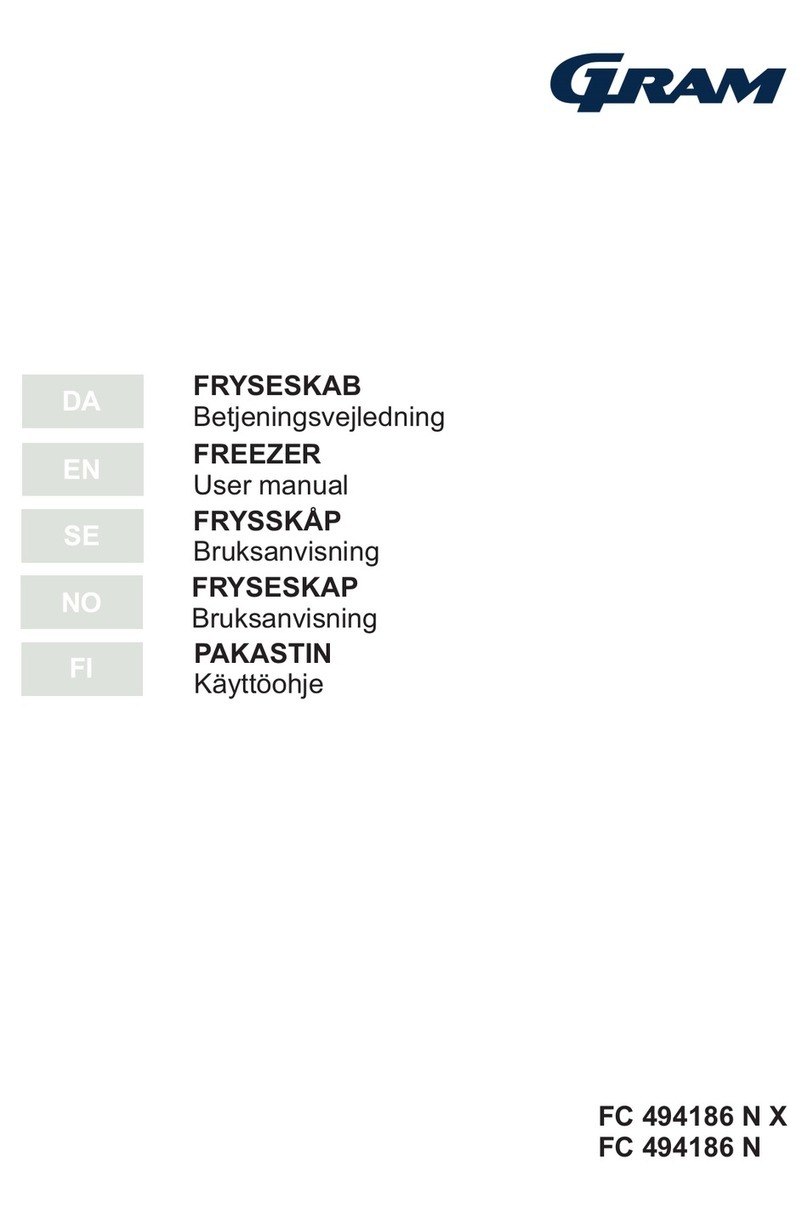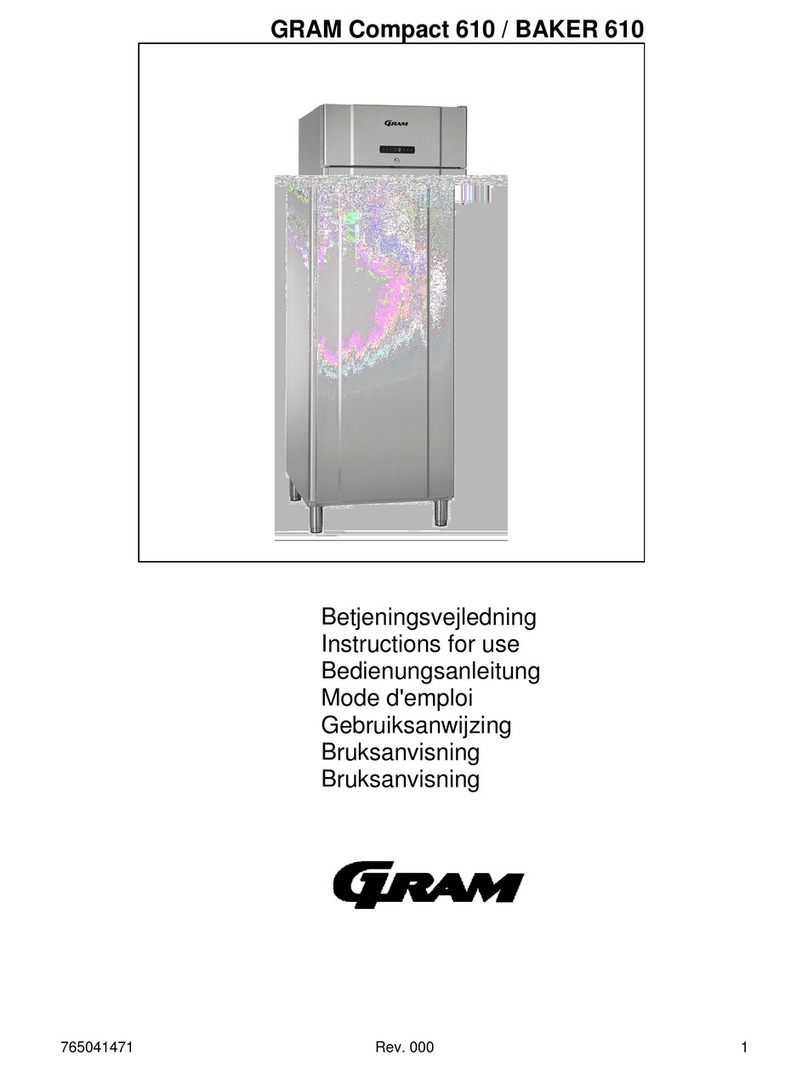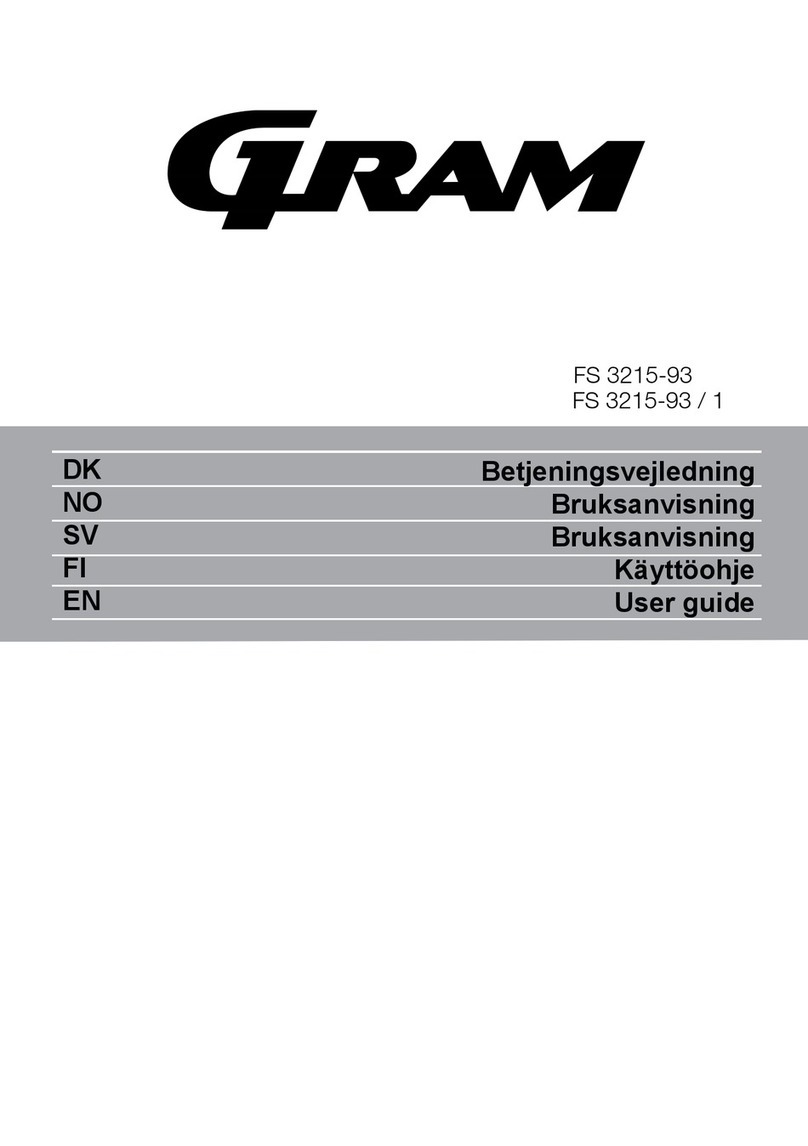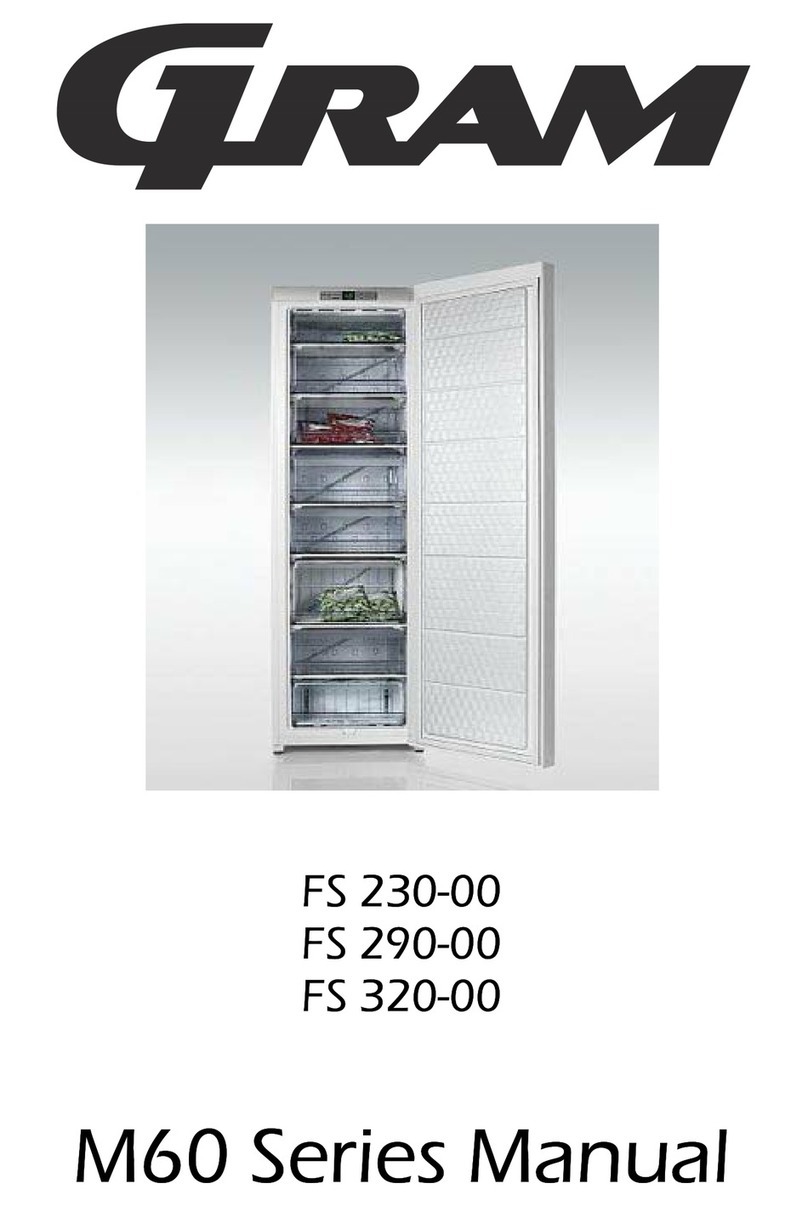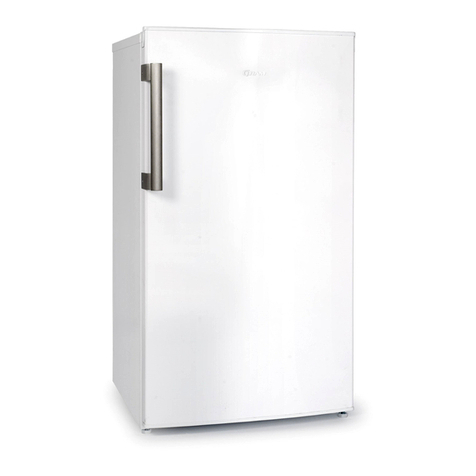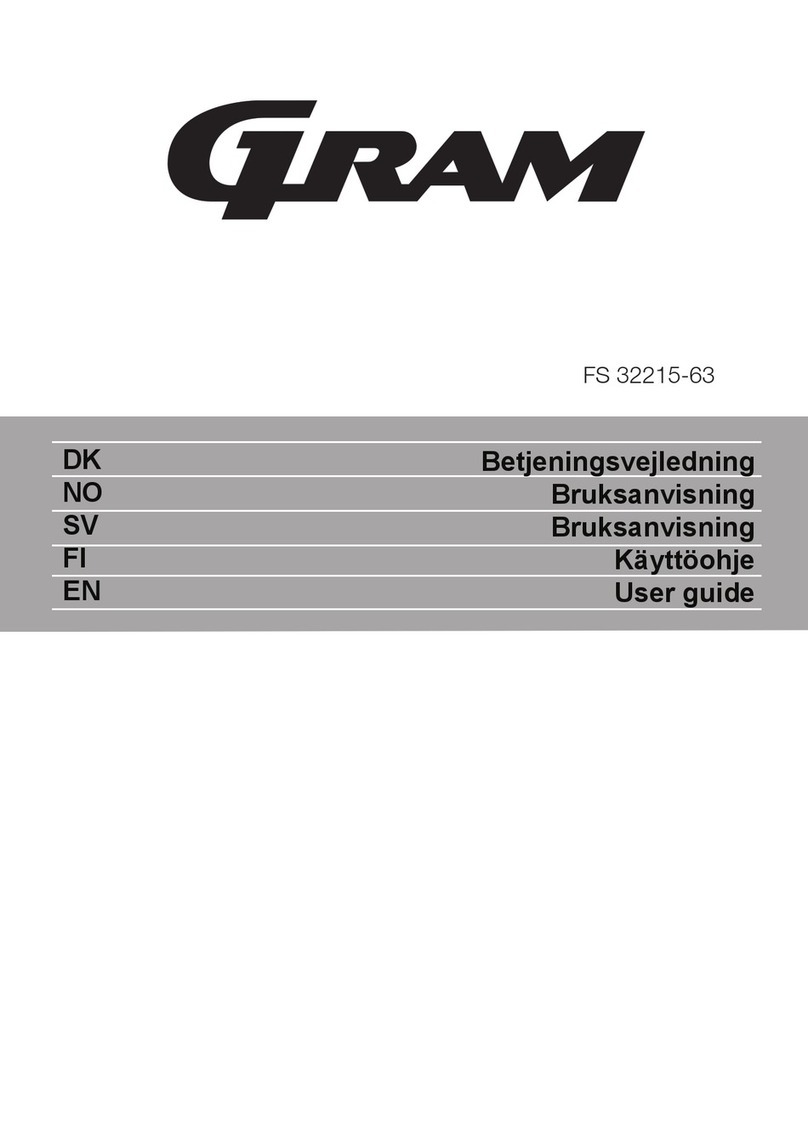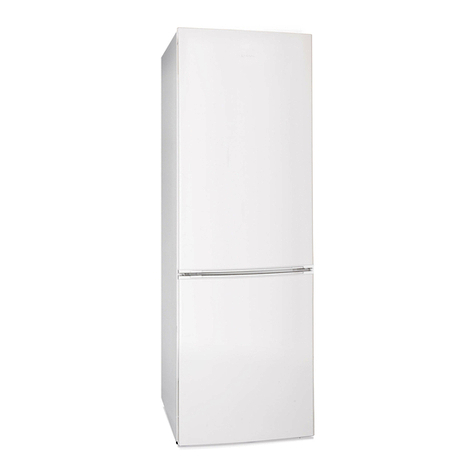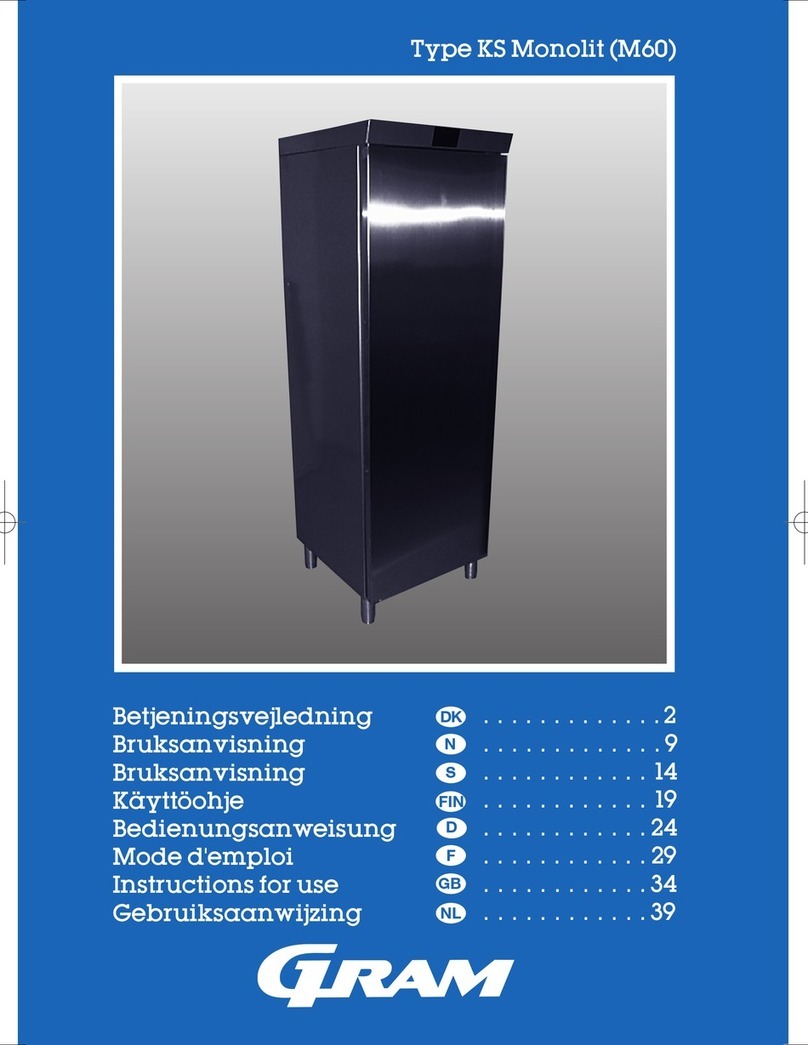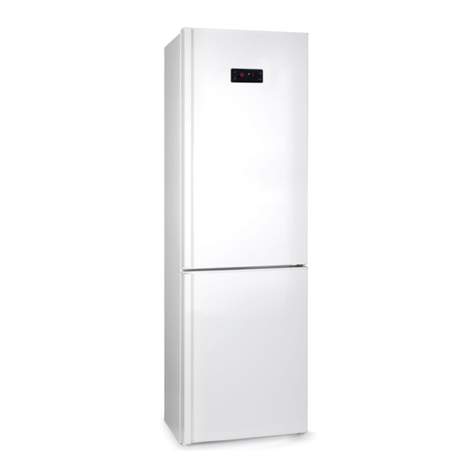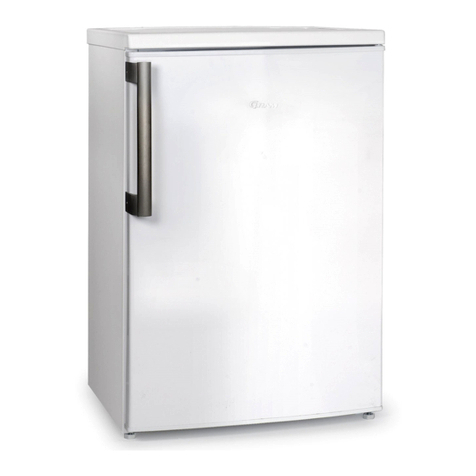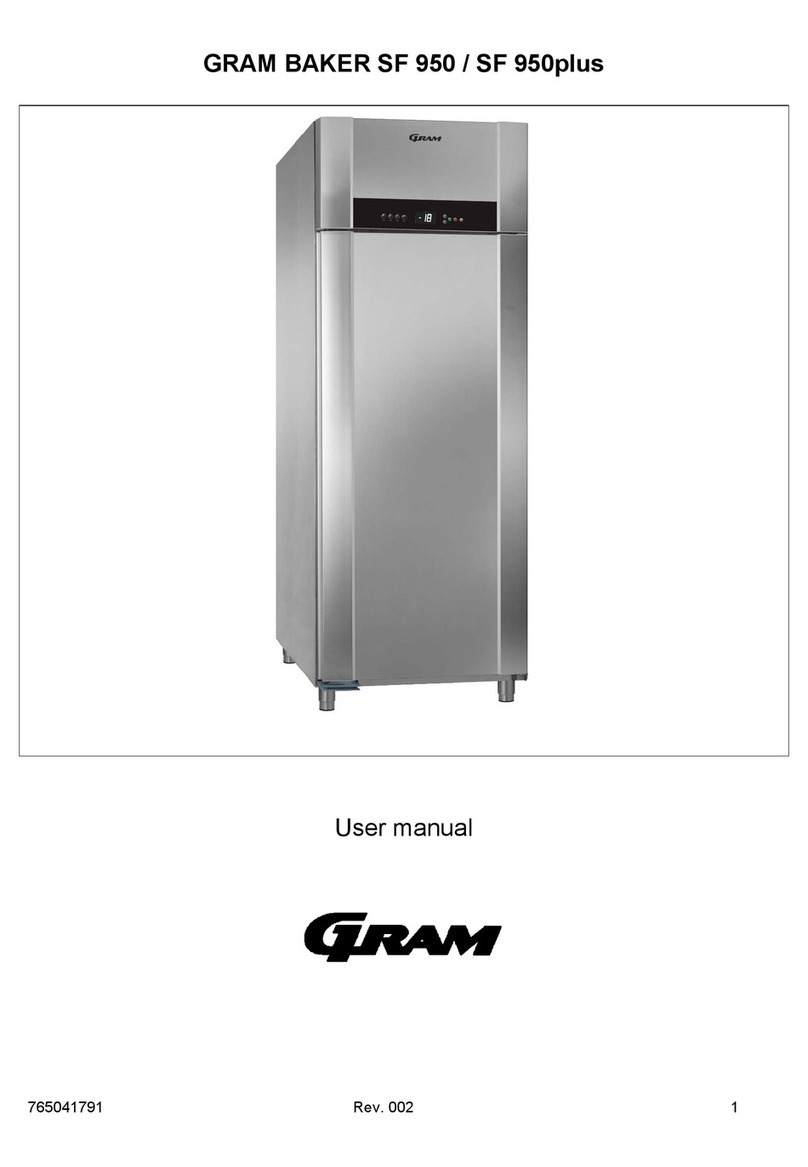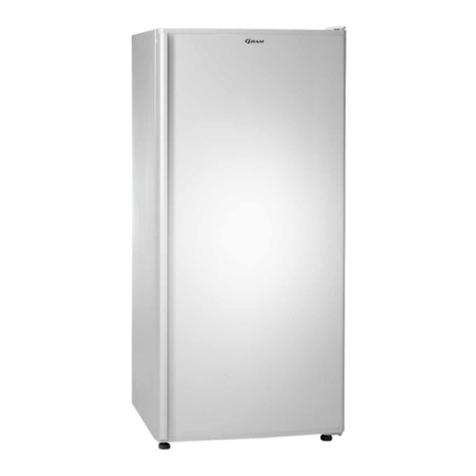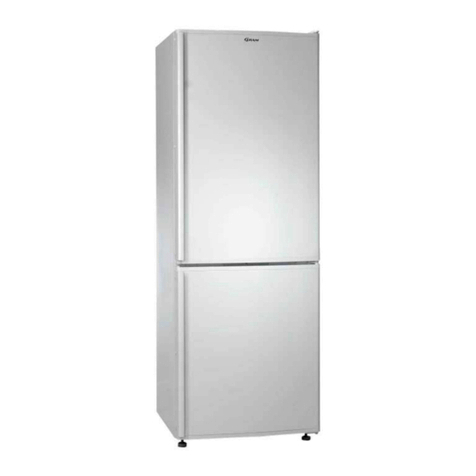EN
5
2Important information
Please read through the following
information. If it is is not followed,
personal injury or material damage
may occur and all warranty and
reliability commitments will become
invalid.
Intended use
t5IJTQSPEVDUJTEFTJHOFEGPSEPNFTUJDuse.
t*UTIPVMEOPUCFVTFEPVUEPPST*UJTnot appropriate to use it outdoor even
if the place is covered with a roof.
General safety
t8IFOUIJTQSPEVDUJTXPSOPVUZPVmust not treat it as household waste.
Instead it has to be handed over to
the existing place of collection for the
recycling of electrical and electronic
equipment.
t$POTVMU(3".TFSWJDFGPSBMMZPVSquestions and problems related to the
freezer.
t7BQPSBOEWBQPSJ[FEDMFBOJOHmaterials should never be used in
connection with the cleaning and
defrosting of your freezer. In such
cases, the vapor might get in contact
with the electrical parts and cause
short circuit or electric shock.
t%POPUVTFFMFDUSJDBMEFWJDFTJOTJEFthe freezer.
t%POPUEBNBHFUIFDPPMJOHDJSDVJUwhere the refrigerant is circulating,
with drilling or cutting tools. The
refrigerant that might blow out when
the gas channels of the evaporator,
pipe extensions or surface coatings
are punctured may cause skin
irritations and eye injuries.
t%POPUDPWFSPSCMPDLUIFWFOUJMBUJPOholes on your freezer with any
material.
t3FQBJSTPGUIFFMFDUSJDBMQBSUTmust only be made by authorised
UFDIOJDJBOT3FQBJSTQFSGPSNFECZunauthorised people may cause a risk
for the user.
t*ODBTFPGBOZGBJMVSFNBJOUFOBODFor repair, disconnect your freezer's
mains supply by either turning off the
relevant fuse or by unplugging your
appliance.
t%POPUQVMMUIFDBCMFXIFOQVMMJOHPVUthe plug.
t'MBNNBCMFJUFNTPSQSPEVDUTUIBUcontain flammable gases (e.g. spray)
as well as explosive materials must
never be kept in the appliance.
t%POPUVTFNFDIBOJDBMEFWJDFTor other means to accelerate the
defrosting proces, other than those
recommended by the manufacturer.
t%POPUPQFSBUFBEBNBHFEGSFF[FS$POTVMU(3".TFSWJDFJGZPVIBWFBOZdoubts.
t&MFDUSJDBMTBGFUZPGZPVSGSFF[FSXJMMonly be covered by the guarantee
if the earth system in your house
complies with standards.
t&YQPTJOHUIFQSPEVDUUPSBJOTOPXsun and wind is dangerous with
respect to electrical safety.
